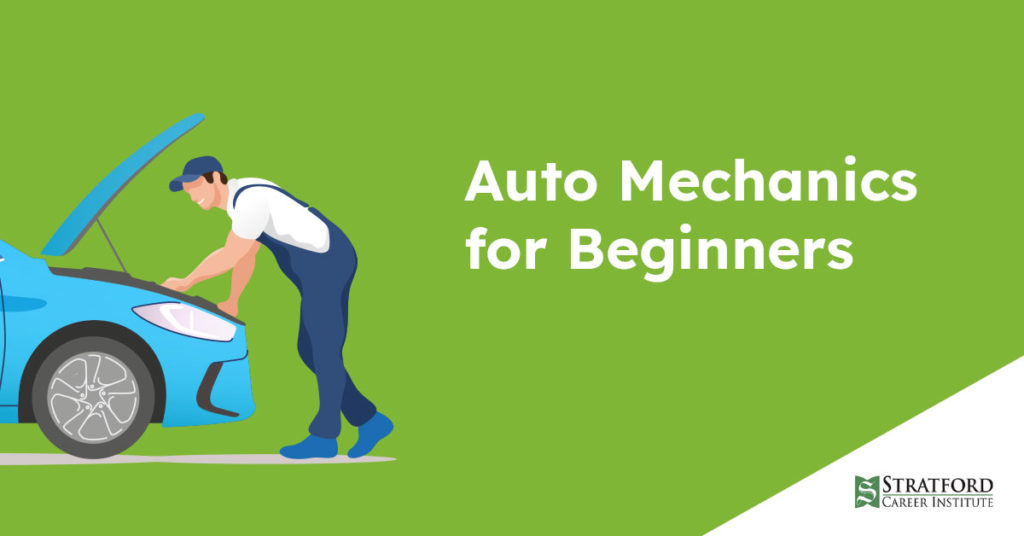
Are you good at troubleshooting and fixing things?
Do you like working with your hands and don’t mind getting a little dirty?
Maybe you would like to learn more about auto mechanics, and maybe even pursue it as a career.
What do Auto Mechanics Need to Know?

A nice place to begin learning more about auto mechanics for beginners could be the Auto Mechanics distance learning course offered at Stratford Career Institute.
For now, let’s take a closer look at some of the systems found in most vehicles and different aspects of cars.
The Engine
Most cars are powered using an internal combustion engine which relies on simple physics to get the car moving. This type of engine essentially uses a series of tiny explosions known as combustions to propel a car forward. These explosions are contained internally, within the chamber.
When a driver presses the gas pedal, gas is fed from the fuel tank to the chamber where air, pressure, and electricity mix together. The result is a small explosion which starts a chain reaction to propel a car down the road:
The engine’s pistons move up and down,
⇩
a series of gears and racks turn the axle,
⇩
the wheels of the car turn,
⇩
the car starts moving!
The Brakes
Another essential vehicle part to understand is the brake system.
Most cars have disc brakes. When the driver pushes the brake pedal, fluid is pushed through a tube causing padded, grippy discs to extend and grip the car wheel to slow it down.
For added safety, vehicles today are equipped with ABS brakes, a computerized system that stops the brakes from locking up in an emergency situation.
What to do When Problems Occur
Auto mechanics must quickly and accurately diagnose common vehicle problems.
Many problems today are found using computer diagnostic systems in the shop, however, some simple problems are quickly and easily diagnosed manually.
Fluids, for example, have their own distinct colors making a potential leak easier to track. Quickly dabbing leaked fluid with a white paper towel can help you to better see the color of the fluid.
- Pink or green fluids are usually coolant.
- Yellowish? Look for problems in the power steering line.
- Transmission fluid is more reddish in color.
Color is also helpful in diagnosing potential exhaust system problems. White, blue or black smoke can point to head gasket or engine valve problems which should be investigated immediately.
Auto mechanics also find and diagnose problems by listening to and locating unusual sounds.
Learn Auto Mechanics
Most auto mechanics are high school graduates with additional vocational or post-secondary training.
You can learn about auto mechanics for beginners through Stratford Career Institute. We offer an easy and affordable Auto Mechanics distance learning course which is a convenient way to learn about auto mechanics at home.
Whether you’re looking to fix your own car or break into the field, this course can help you learn about the essentials of auto mechanics online.
Learn Auto Mechanics!

Have you thought about a career as an automechanic? Try our automechanics course today!



